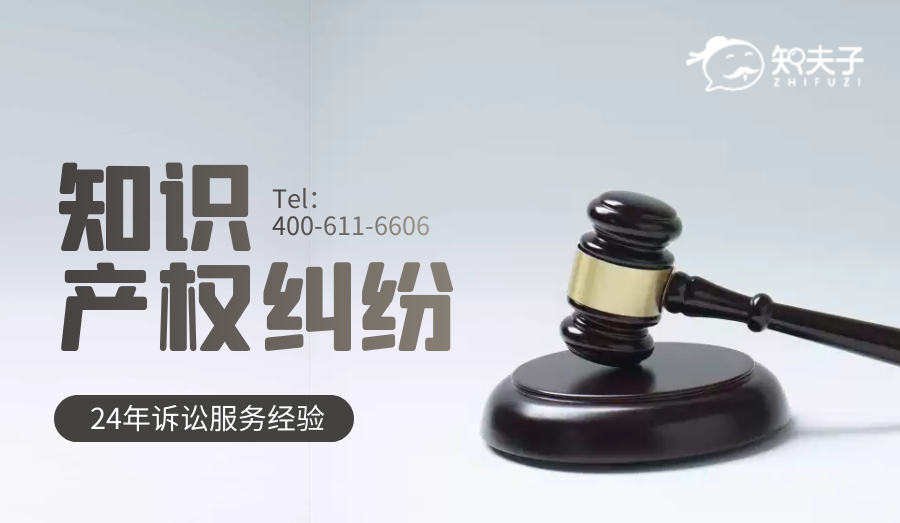- 来源:
- 知夫子
- 2020-03-31
- 阅读
- (11430)
《大不列颠及北爱尔兰联合王国1988年版权、外观设计与专利法》之英国第一编版权法诞生,英国版权法规定了版权保护的一般期限:自作品创作完成之日起,至作者死亡后第70年的1月1日。接下来,小知就为大家带来英国版权法(英文原版)的全部内容,希望对你有所帮助。
Copyright law of the United Kingdom
The modern concept of copyright originated in the United Kingdom, in the year 1710, with the Statute of Anne.
The current copyright law of the United Kingdom is to be found in the Copyright, Designs and Patents Act 1988 (the 1988 Act), as amended. This came into force on 1 August 1989, for the most part, save for some minor provisions
Various amendments have been made to the original statute, mostly originating from European Union directives.
Works eligible for protection[edit]
The types of work eligible for copyright protection include a literary, dramatic, artistic or musical work, the typographical arrangement of a published edition, a sound recording, a film, or a broadcast.[1]
Cinema films made before 1 June 1957, the date on which the Copyright Act 1956[2] came into force, are not protected as film. They are either protected as a dramatic work under the Copyright Act 1911 (the 1911 Act) or as a series of photographs.
Wireless broadcasts prior to 1 June 1957 are not protected at all. The 1911 Act made no provision for them, as broadcasting had not as yet been invented when the Act was passed. Broadcasts by cable prior to 1 January 1985 are not protected at all either. Both the Acts of 1911 and 1956 made no provision for broadcasts by cable, as they had not been defined and protected as either "works" or "broadcasts" of either Acts.
Qualification for protection[edit]
The 1911 Act provides that an individual's work is automatically under copyright, by operation of law, as soon as it leaves his mind and is embodied in some physical form: be it a novel, a painting, a musical work written in manuscript, or an architectural schematic. This remains the legal position under the Schedules of 1956 Act and of the 1988 Act.
Once reduced to physical form, provided it is an original work (in the sense of not having been copied from an existing work), then copyright in it vests automatically in (i.e. is owned by) the author: the person who put the concept into material form. There are exceptions to this rule, depending upon the nature of the work, if it was created in the course of employment.
The question of who is the "author" of a work, and what rights attach to the author, is further discussed below.
In order to grant copyright protection to computer databases, UK copyright law recognises the element of labour and skill used in compiling them, even though they are not in truth original works (being entirely derived from existing records),[3] applying a principle sometimes called the 'Sweat of the Brow' doctrine; they are also protected by database right (see below).
The term 'Unfair Use'[4] is sometimes applied in that context, to refer to the use of a work into which someone has invested a lot of skill and labour, but where little or no originality is present. This is mainly in the case of reproduction photography, or the retouching of artistic works that are out of copyright, or for simple computer databases, such works not being original.
A work, other than a broadcast, can qualify for copyright protection in either of two ways: by the nationality of the author, or by the country of first publication.
A work qualifies for copyright protection, if made after 1 June 1957 (the date on which the Copyright Act 1956 came into force), if its author is:
a British citizen, a British dependent territories citizen, a British National (Overseas), a British subject, or a British protected person, or
an individual resident or domiciled in the United Kingdom, or in another country to which the qualification clause extends, or
a body incorporated under the law of a part of the United Kingdom, or another country to which the qualification clause extends.
Alternatively, a work can qualify for copyright protection if its first publication took place:
in the United Kingdom, or
in another country to which the qualification clause extends.
However, a work made before 1 June 1957 can only qualify for copyright protection by its country of first publication; not by the author's nationality.
A broadcast, if made after 1 June 1957, qualifies for protection if:
it is made from the United Kingdom, or
it is made from another country to which the qualification clause extends.
Lists of the countries which trigger qualification are published in Statutory Instruments periodically. They are, in point of fact, those countries which have acceeded to the Berne Copyright Convention.
First publication[edit]
First publication is defined as the first occasion that a work is published anywhere. But if a work is simultaneously published in several countries, all within a 30 day period, each of those countries is treated as the country of first publication.
For example, if a work is first published in the United Kingdom, but is published in Canada, Australia and New Zealand within the following 30 days, all those countries are treated under UK law as being the country where the work was first published.
This used to be of importance, prior to 1957, for in those days first publication was the only possible way to obtain copyright. It became much less important due to the Copyright Act 1956, which grants copyright in the United Kingdom to any work if the author is a British citizen or is resident in Britain, or is a citizen of (or resident in) a Berne Convention country.
Copyright term[edit]
Printed works[edit]
The term of author's copyright under the Copyright Act 1842 (which protected only printed works) was 42 years from the publication of the work, or the lifetime of the author and 7 years thereafter, whichever was the longer.
In the 1911 Act the term of author's copyright was extended to the lifetime of the author and 50 years thereafter; this remained the case under the 1956 Act and the 1988 Act.
The 1911 Act in effect extended the meaning of "author" so that this period of copyright applied to all types of works, not merely printed works.
Under the 1995 Regulations (set out below), the period of author's copyright was further extended, to the lifetime of the author and 70 years thereafter. Those regulations were retrospective: they extended the copyright period for all works which were then still in copyright, and (controversially) revived the lapsed copyright of all authors who had died in the previous 70 years, i.e. since 1925.
Accordingly, copyright in literary, dramatic, musical and artistic works currently expires 70 years from the end of the calendar year of the author's death. Where the work has more than one author, the copyright expires 70 years after the death of the last survivor of them.
The publisher's (separate) copyright, in the typographical arrangement of a printed work, lasts for 25 years from the end of the year in which publication occurred. This protects a publisher's copyright in all printed works: including books, magazines, newspapers, and other periodicals.
Other works[edit]
Other works (such as sculpture, architecture, etc.) will typically vary in copyright term, depending whether the author of the work is anonymous. If the author is unknown, the copyright period ends 70 years after the making of the work; or, if during that period the work is communicated to the public, 70 years after that date. If the author of the work is identifiable, copyright in the work expires 70 years after the death of the author.
In the case of a motion picture, the period of copyright is determined by the life of the principal director, the author of the screenplay, the author of the dialogue, and the composer of any original music for the film. If that person is not a national of a European Economic Area (EEA) country, and the country of origin is not in the EEA (for example, the United States of America), the period of copyright is that provided by the film's country of origin, if that period is less than the normal period under UK law. If a film does not have any of the four persons mentioned above, the duration of its copyright is 50 years.
Computer generated artistic works have a copyright protection of 50 years from creation of the work. As with other such copyrights, if the author is not an EEA national, and the country of origin is not an EEA state, then the duration of the country of origin applies, provided it does not exceed the normal period under UK law.
Broadcasts and sound recordings each have a different period of copyright: as detailed in the sections below.
International copyright[edit]
Notwithstanding that a work qualifies for copyright protection in the UK, it will not be automatically entitled to the normal period of copyright (as set out above). It may be entitled to only a shorter period of protection.
Where the author is not British (by nationality or domicile), and the work was first published outside the United Kingdom (and not published in the UK within 30 days thereafter), the period of copyright protection provided by UK law is limited to that provided by the laws of the "country of origin" of the work.
The country of origin, in the case of a broadcast, is the country the transmission originates from; and in the case of other works is the country in which the work was first published.
If a work is first published in only one country, which is a party to the Berne Convention, then that is the country of origin.
If a work is published simultaneously (i.e. in more than one country, but all within 30 days), and one of the countries is a European Economic Area (EEA) country, then the EEA country is the country of origin (even if another is a Berne Convention country); but if none of them is an EEA country, and one of them is a Berne Convention country, then the Berne Convention country is the country of origin.
If two or more Berne Convention countries qualify, and not all of them are in the EEA (such as Canada, the US, or Australia), then the Berne Convention country with the shortest applicable copyright term determines the copyright term within the UK, if it is shorter than the normal term for such a work under UK law.
If the country of first publication is not a Berne Convention member, or if the work is unpublished, the copyright term will vary depending on what type of work it is. Where the work is a film, and the maker of the film is headquartered in a Berne Convention country, or is domiciled or resident in a Berne Convention country, then the country of origin is that country. If the work is a work of architecture in a Berne Convention country, or an artistic work incorporated in a building in a Berne Convention country, then the country of origin is that country. Otherwise the country of origin is the country of which the author is a national.
Extension of copyright term[edit]
Prior to 1 January 1996, the UK's general copyright term was the life of the author plus 50 years. The extension, to the life of the author plus 70 years, was introduced by The Duration of Copyright and Rights in Performances Regulations 1995 (SI 1995/3297), implementing Council Directive No.93/98/EEC, to harmonise the duration of copyright throughout the European Economic Community.
It contained a controversial provision, which caused certain copyrights to revive; material which had been out of copyright came back into copyright. If the 1988 Act offered a shorter term of protection than the new Regulations, and if the work was still under copyright on 1 July 1995 anywhere in the EEA, then the copyright of that work was revived. But if the 1988 Act offered a longer term than the new regulations, then the old longer term still applied.
The normal practice of British law would have been to freeze the extension, applying it only to new works, rather than reviving extinct copyrights.
Broadcast copyright[edit]
In the United Kingdom, there are two distinct classes of broadcast: those made before and those made after the commencement of the Copyright Act 1956. Under the Act of 1911, passed before the invention of radio or television broadcasting, no copyright existed in a broadcast, and this was not modified until the Act of 1956. Until the 1950s not even the broadcaster had the technical means of recording or replaying a broadcast signal, so there had been no need to make provision for copyright protection.
The 1956 Act is not retrospective in its effect, so a television or radio broadcast made before 1 July 1957 (the commencement date of the Act) has no broadcast copyright: Schedule 7 para 17, Copyright Act 1956.
In the case of a broadcast made after the commencement of the 1956 Act, the copyright in a broadcast programme expires 50 years from the end of the year in which it is broadcast: section 14(2), Copyright Act 1956. Repeating such a broadcast does not extend the period of copyright, whether the repeat is during or after the 50 year copyright period: section 14(3), Copyright Act 1956.
The 1956 Act restricts only two matters: it prohibits recording the broadcast for commercial purposes, and it prohibits causing the broadcast (if it is a television broadcast) to be seen in public by a paying audience: section 14(4), Copyright Act 1956.
These provisions were re-enacted in substantially the same terms in the Copyright Designs and Patents Act 1988, in order to preserve the distinction (established in the 1956 Act) between broadcasts made before and after 1 June 1957.
The 1988 Act applies only to broadcasts made after it came into force on 1 August 1989: section 170 and Schedule 1 paragraph 5(1), Copyright Designs and Patents Act 1988. But it effects merely a continuation, in the main, of the pre-existing law on broadcast copyright established in the 1956 Act, while adding protection for the new technology of cable television.
In the 1988 Act provision was made for the first time for material distributed by cable television, in the form of a separate copyright for cable programmes. This copyright lasts for the same period as broadcast copyright. However, there is no protection for cable programmes transmitted before 1 January 1985. Subsequent amendments to the 1988 Act have now merged the definition of a cable programme into the definition of a broadcast.
Radio prior to 1988[edit]
There is no copyright in a radio broadcast transmitted in the United Kingdom before 1 June 1957, the commencement date of the Copyright Act 1956. Prior to that Act there was no such thing as broadcast copyright in British law. The previous law was contained in the Copyright Act 1911, which was enacted before the invention of broadcasting.
The 1956 Act is not retrospective in its effect. A radio broadcast made before 1 July 1957 (the commencement date of the 1956 Act) has no broadcast copyright: Schedule 7 paragraph 17, Copyright Act 1956; and Schedule 1 paragraph 9, Copyright Designs and Patents Act 1988.
Under the terms of the 1956 Act, broadcast copyright expires 50 years from the end of the year in which it was transmitted: section 14(2), Copyright Act 1956. The 50 year copyright period cannot be extended for such broadcasts. Repeating a broadcast does not extend the period of copyright, whether the repeat is during or after the 50 year copyright period: section 14(3), Copyright Act 1956; and Schedule 1 paragraph 9, Copyright Designs and Patents Act 1988.
Under the terms of the 1956 Act, copyright in a radio broadcast is not infringed by recording it for non-commercial use. The Act only prohibits recording a broadcast if done other than for private purposes, and it also prohibits causing a broadcast (if it is a television broadcast) to be seen in public by a paying audience: section 14(4), Copyright Act 1956.
In respect of the first point, a recording is not made for a commercial purpose (i.e. a non-private purpose) unless it is offered for sale; so where a recording was made for home use, and is not subsequently offered for sale, at no stage is it used for a commercial purpose. In respect of the second point, where the broadcast is radio, not television, it does not fall within the terms of the restriction.
The effect is that it is not an infringement of copyright to record or copy a broadcast made on or after 1 January 1959, unless it is done for commercial purposes (i.e. for payment).
The copyright law of the United Kingdom was not amended further until 1988; and the 1988 Act has no application to a broadcast made before it came into force, on 1 August 1989: section 170 and Schedule 1 paragraph 5(1), Copyright Designs and Patents Act 1988.
The 1988 Act is relevant to an earlier broadcast only in that it now expressly permits the making of a copy for private study: section 29, Copyright Designs and Patents Act 1988. This strengthens the previous provision, in section 14 of the 1956 Act, that permits a broadcast to be recorded for private purposes.
Sound recordings[edit]
Under the 1988 Act, copyright in a sound recording expires either (a) 50 years after the recording is made, or (b) if the recording is published during that period then 50 years from the publication, or (c) if during the initial 50 years the recording is played in public or communicated to the public then 50 years from that communication or playing to the public, provided the author of the broadcast is an EEA citizen. Otherwise, the duration under the laws of the country of which the author is a national applies, unless such a duration would be longer than offered in UK law, or would be contrary to treaty obligations of the UK in force on 29 October 1994.
As of November 1, 2013, the copyright on sound recordings not yet in the public domain was extended from 50 to 70 years.[5]
Posthumous works[edit]
If an unpublished work was published before the 1988 Act came into force, and the author had been dead for more than 50 years, the work remained in copyright for 50 years from the end of the year of publication.
If an unpublished work is published after the 1988 Act came into force, and the author had been dead for more than 50 years, its copyright will expire at the end of 2039. Later amendments have altered this to include only authors who died more than 70 years before the Act came into force.
关于英国版权法(英文原版)的全部内容,小知就为大家整理到此,但愿能够为您提供一些帮助。如果遇到此类问题,请你认真阅读以上内容,希望以上小知为你提供的答案能够解决你的问题。如果你的情况比较复杂,知夫子也提供律师在线咨询服务400-611-6606,欢迎你进行法知识产权律咨询。
- (内容来源于知夫子)
- 下一篇:美国版权法保护年限
问题描述:
 信息保护中,请放心填写
信息保护中,请放心填写*联系方式:
微信扫一扫,使用小程序

微信扫一扫,加好友

 因认为优舫(北京)信息科技有限公司(简称“优舫公司”)在多家应用使用“人人车”名称构成不正当竞争,人人车公司将其诉至法院。今日(9月19日),新京报记者从北京知识产权法院法院获悉,法院一审认定优舫公司构成对人人车公司相关权益的不正当竞争,判令优舫公司承担停止侵权、消除影响的责任,并赔偿人人车公司经济损失和合理支出共计570万元。
因认为优舫(北京)信息科技有限公司(简称“优舫公司”)在多家应用使用“人人车”名称构成不正当竞争,人人车公司将其诉至法院。今日(9月19日),新京报记者从北京知识产权法院法院获悉,法院一审认定优舫公司构成对人人车公司相关权益的不正当竞争,判令优舫公司承担停止侵权、消除影响的责任,并赔偿人人车公司经济损失和合理支出共计570万元。- 商标
- 2019-12-11
- 阅读(2690)
 商标注册11月1日,修改后的商标法正式施行,明确将恶意侵犯商标专用权的赔偿数额由3倍以下提高到5倍以下,将法定赔偿额上限从300万元提高到500万元。
商标注册11月1日,修改后的商标法正式施行,明确将恶意侵犯商标专用权的赔偿数额由3倍以下提高到5倍以下,将法定赔偿额上限从300万元提高到500万元。- 商标
- 2019-12-06
- 阅读(3845)
 近日,新加坡卡帝乐鳄鱼私人有限公司(下称卡帝乐)与法国拉科斯特股份有限公司(下称拉科斯特)围绕包含头朝左与头朝右的鳄鱼图形的商标展开的纷争,有了新的进展。根据最高人民法院判日前公开的判决,在原国家工商行政管理总局商标评审委员会(下称原商评委)裁定对拉科斯特的“鳄鱼图形(头朝左)”商标予以维持注册后,历经一审、二审和再审程序,原商评委所作裁定最终得以维持。
近日,新加坡卡帝乐鳄鱼私人有限公司(下称卡帝乐)与法国拉科斯特股份有限公司(下称拉科斯特)围绕包含头朝左与头朝右的鳄鱼图形的商标展开的纷争,有了新的进展。根据最高人民法院判日前公开的判决,在原国家工商行政管理总局商标评审委员会(下称原商评委)裁定对拉科斯特的“鳄鱼图形(头朝左)”商标予以维持注册后,历经一审、二审和再审程序,原商评委所作裁定最终得以维持。- 商标
- 2019-12-05
- 阅读(3135)
 近日,浙江省湖州市南浔区农业技术推广服务中心收到《关于第16277983号“绣花锦”商标无效宣告请求裁定书》,苏州康盛环保工程有限公司的“绣花锦”商标在新鲜蔬菜商品上被裁定予以无效宣告。历时数月,南浔区在这场商标“保卫战”取得了初步胜利。这“绣花锦”,究竟为何让南浔区苦苦“追寻”?
近日,浙江省湖州市南浔区农业技术推广服务中心收到《关于第16277983号“绣花锦”商标无效宣告请求裁定书》,苏州康盛环保工程有限公司的“绣花锦”商标在新鲜蔬菜商品上被裁定予以无效宣告。历时数月,南浔区在这场商标“保卫战”取得了初步胜利。这“绣花锦”,究竟为何让南浔区苦苦“追寻”?- 商标
- 2019-12-05
- 阅读(3327)
 商标是一个企业形象的展示,心血的凝聚,“商标是商战的利器,是开拓市场的先锋”,商标的重要性不言而喻。
商标是一个企业形象的展示,心血的凝聚,“商标是商战的利器,是开拓市场的先锋”,商标的重要性不言而喻。- 商标
- 2019-12-04
- 阅读(3736)

















